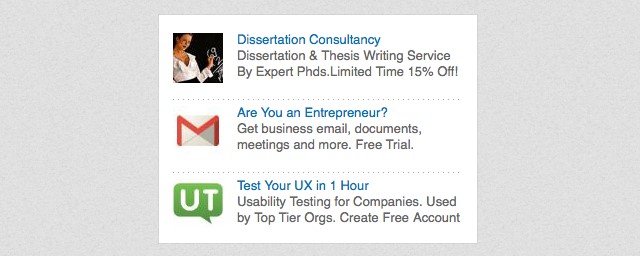You have seen them when you search on Google, or when you’re cruising Twitter, getting distracted by Facebook, or looking up a potential client on LinkedIn. You might have even clicked on one or two. The reason your competitors are creating “pay per click” (PPC) ads is to drive traffic to their websites, to create leads, and to produce more revenue for their business. PPC ads are now a mainstay of any well thought-out marketing campaign.
So, we have put together a series on how to get the most from your organisation’s PPC ad investment. Our series will focus on each of the five most important aspects of running a PPC ad campaign. Today’s article will give you a strong foundation in the basics of PPC ad best practice, and forms the introduction of our series—so look out for future posts where we will go into further detail on everything discussed here.
If you are unsure of where to begin, or are anxious about blowing your budget on ads that don’t return on your investment, don’t worry, we’ve got you covered. But be warned, it takes much more than simply sticking just any type of ad online and watching the numbers role in. The evolution of ad-blocking, combined with increased competition mean you need to be more savvy, more creative and more determined than ever to make your PPC ads do what you want them to do. This is our exclusive guide to giving your brand content, product, or service the best chance to be seen by as many of the right people as possible.
Let’s look at how to get started with PPC ads in our 5-step guide:
1. Know your medium?
One of the first questions you should ask yourself is where do you intend to run your PPC ads? The most popular mediums for your ads are Google, Twitter, LinkedIn and Facebook. Where you choose to place the ads will depend on a number of specifics for your business and industry. For example, Twitter and Facebook are popular in consumer markets, whereas LinkedIn is useful for B2B organisations. However, B2B businesses should ideally have a mix of LinkedIn, Twitter, Facebook and Google AdWords for the best possible return in terms of traffic, impressions, and those all-important clicks.
Once you have decided what platforms you are going to run ads on, it’s important to have the format and specs for the different kinds of ads you’re looking to create. For example, if you are creating LinkedIn Text Ads, you should be aware that:
- Your headline cannot exceed 25 characters (including spaces)
- Your description cannot exceed 75 characters (including spaces)
A neat example of three LinkedIn Text Ads:

2. Support your PPC ads with images
From our above example, you can see that even the smallest of ads are supported by images. That’s because images are extremely important to the conversion rate of almost any kind of PPC ads (you don’t need to worry about images for Google AdWords, FYI). The most important things to think about when it comes to images for your ads are:
- Different mediums will accommodate different image specs. That means a LinkedIn text ad (as in the above example) won’t have the same image size capacity that a Twitter website card will have…see the specs here.
- Images (and videos) will eat into your character count. Twitter has relatively recently changed in this respect, but it’s worth making sure how multimedia affects the other ad mediums.
Here’s a handy guide to consult if you get a little confused as to what images can go where, in what size and in what focus.
You will also probably want to understand how videos are viewed differently depending on your chosen medium. For example, videos on Facebook will begin playing automatically and thus up your impressions/view count (and eat into your budget), but may not give you the same click-through rate as say, a YouTube video with the same views. So, remember, context is key.
3. Use persuasive copy
Persuasive copy is important. Creating a connection with your target audience is the name of the game. Part of that is making choices about how you present your information. Should you use a question in your PPC ad? Should it be a statement? Maybe a quote from the report, or a statistic about the product you’re promoting will be so juicy and tantalising that your audience can’t help but click to find out more. The point here is that you need to give this some thought. There is no right answer. But it does bring us on nicely to our next point…
4. Analyse your data
Possibly one of the most important aspect of any marketing campaign, whether it’s a direct mail, a newsletter or an email blast, is to mark your progress. Benchmark what you’re doing, see your results, make changes, see their effect, tweak again, see the effect and continue. When you create PPC ads, you already get access to some great analytical tools:
- Use UTM codes to track where your clicks are coming from
- Check the industry standard that is shown on your PPC ad dashboard
- A/B test your images and videos – different people respond to a different combination of multimedia and content, etc.
5. Know your goal
This sounds obvious, but you’d be amazed at how many organisations want PPC ads because they have heard it’s an essential aspect of any marketing arm they should do. Well, PPC ads only work if they have quality content to hold them up. For example, it’s no use having well-crafted ads without the proper landing page behind them. In fact, if you don’t have a relevant destination behind your ad, Google will penalise you and you’ll be wasting your money on ads that aren’t going to connect with your audience. You could think of your standing with Google as a kind of credit history, the more you have ads with relevant content the better everything is.
No ad is an island
Some of the best performing PPC ad campaigns are those that are part of a well thought out and smartly executed marketing plan. So, pair you PPC ads with a fine-looking landing page that is promoting something. And follow that up with great content like a series of insightful blogs, which you can tweet about, etc. Support these with well-timed PPC ads for a little extra firepower, and if you take our above advice, you’ll receive the clicks you deserve.
Next time….
Look out for the next blog in our ultimate guide to PPC ads series, where we will delve further into the topic of PPC ad mediums; where best to place your ads and what specs you need to be aware of.
Looking to create the perfect PPC campaign?
Our Fifty Five and Five marketing team are highly experienced in creating and running successful PPC campaigns. We can help you maximise your PPC ROI, just get in touch with our team today.

